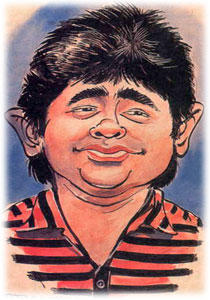Anand Parthasarathy
| Make local/international calls through Internet connection |

BREAKING BARRIERS: D-Link’s Internet Video Phone is the first to be designed and developed in India.
Bangalore: The Internet allows telephone voice calls to be digitised and sent as packets of digital ones and zeroes. There is no reason why the video images of the speakers cannot be sent in the same fashion as long as the Net connection is reasonably fast.
Broadband has become a reality in India (with the public sector BSNL playing a crucial role in lowering the price barrier so that all of us could afford it). So a video telephone call, harnessing what is known as Voice over Internet Protocol or VoIP technology, has been a real possibility for some time — but it tethered the users to a PC or laptop with an Internet connection. And wearing a headphone-mike combo is not every one’s idea of a simple phone experience.
Last week, all that changed. India-based engineers in Bangalore and Goa of the Taiwanese networking products leader D-Link have created the first truly indigenous IP or Internet Protocol-based Video Phone — the GVC 3000. It looks and feels exactly like any standard landline handset — except that you can see the person you are speaking to, on a 5-inch liquid crystal screen. It bypasses the conventional telephone circuits and rides over the Internet — so in addition to the huge advantage of seeing as you speak, you can make local, national or international calls at the cost of just your Net connection.
How can two phones connected to an Internet cable or a wireless network, talk to each other without opening a browser? We put that question to S. Natarajan, vice president (R&D) for D-Link India. He suggested that readers could sign up at one of the many free IP Phone services available which allocates numbers to registered Net Phones like the GVC-3000. (examples: www.iptel.org , www.voiptalk.org , www.freeworlddialup.com, www.sipphone.com )
You can then call any one by dialling his or her number, just as you dial landline phones now. You can call any one with a similar IP Phone — it doesn’t have to be a D-Link — as long it meets a standard called Session Initiation Protocol (SIP).
A team of 15 engineers worked for over two years to create India’s own video phone, but D-Link is likely to market it worldwide as well. It should be available in electronic and lifestyle stores in India within three months as well as through D-Link’s own reseller networks and is likely to cost around Rs.23,000. (watch the “Where to buy” link at www.dlink.co.in).
If you want the convenience of an IP phone without the video, D-Link has also created a non-video version the GLV-540 that will set you back Rs.7,000. Either way this is a telephone technology whose time has come—for India.

No comments:
Post a Comment